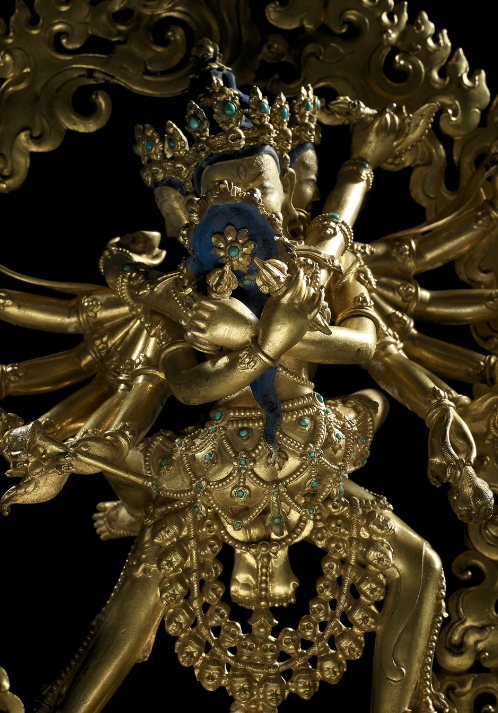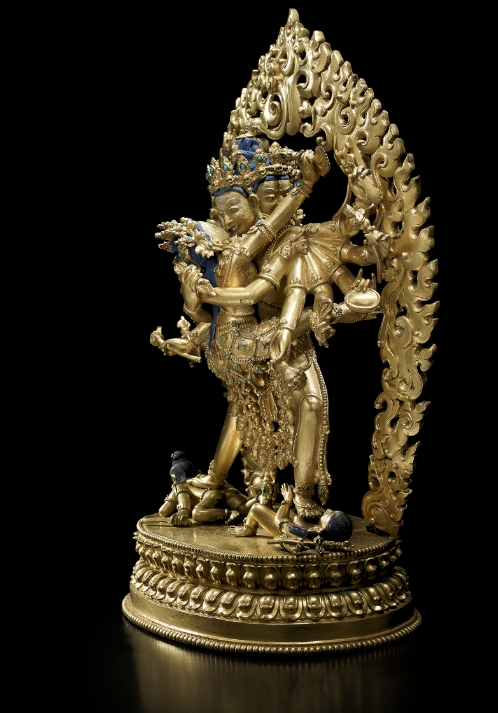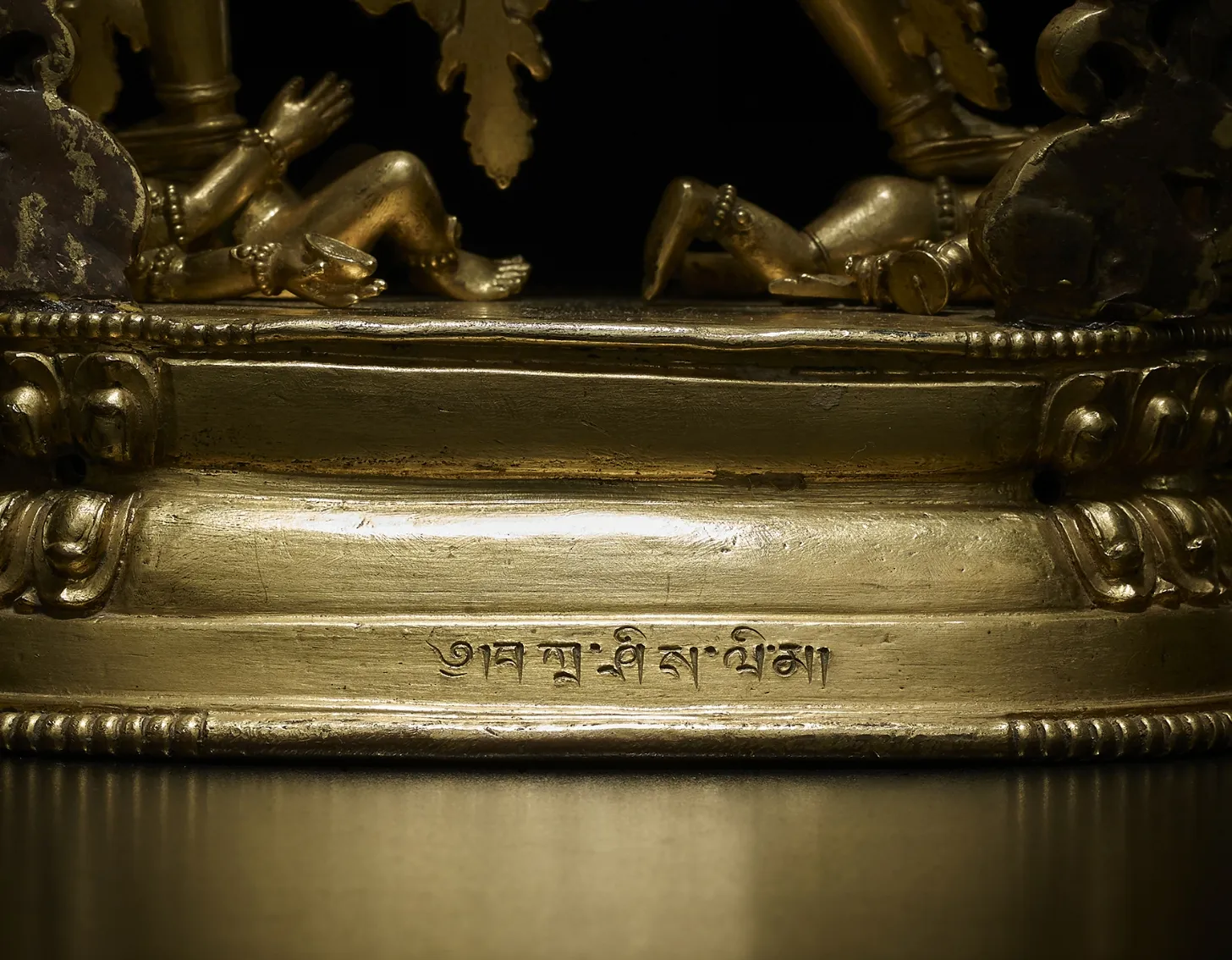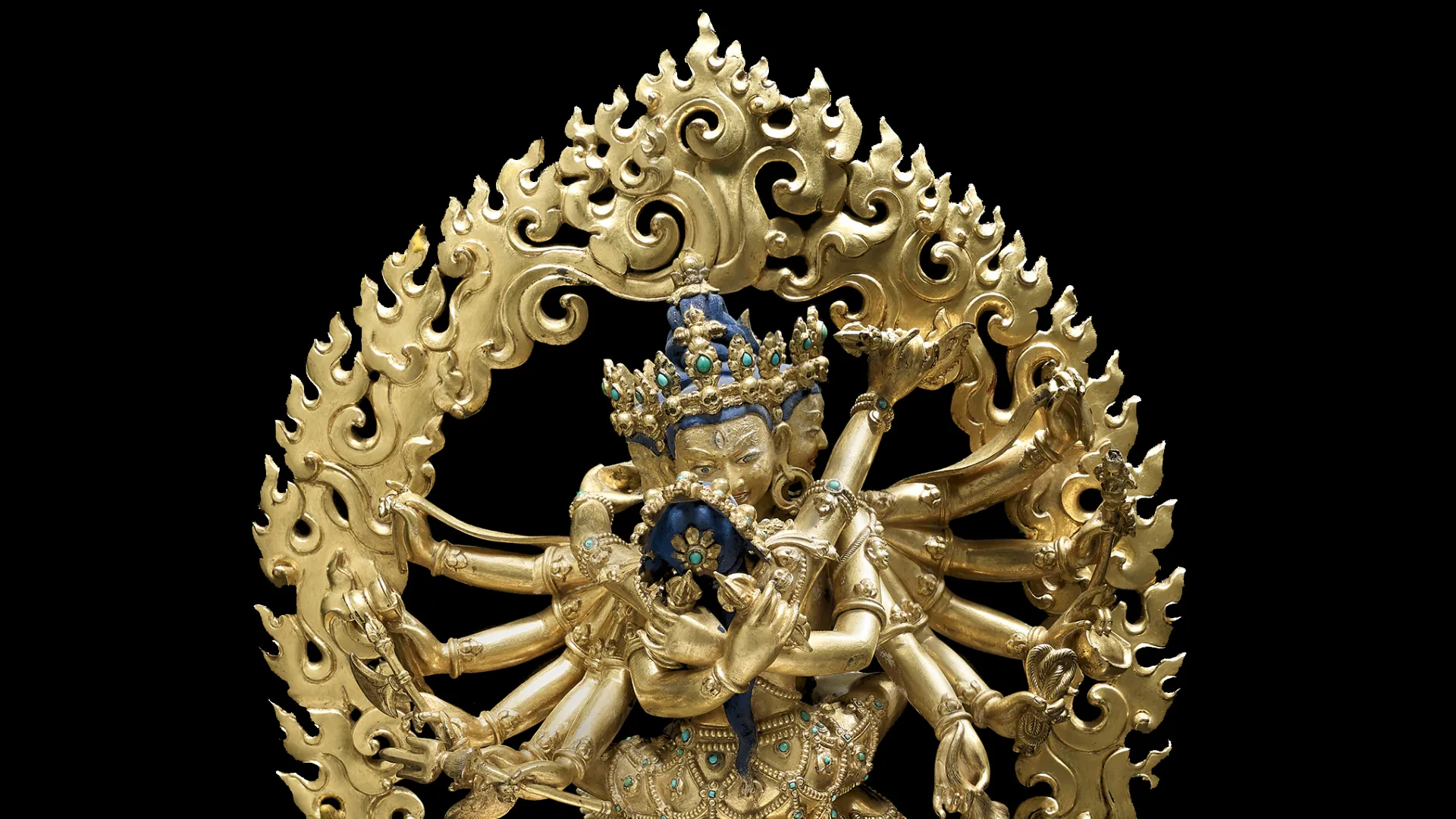Chakrasamvara, “The Circle of Bliss”, is another major tantric deity in the Tibetan Buddhist pantheon, well-represented by the elegant, beautifully cast sculpture in this collection (cat. no. 20). Samvara and Vajravarahi embrace within a halo of fire, his feet pressing firmly on the backs of Bhairava and Kalaratri, while she wraps her legs around his waist. The iconography of this twelve-armed, four-headed god and goddess is also rooted in the medieval tantric traditions of eastern India.
The Chakrasamvara Tantra and the ritualistic and meditative practices associated with it may date to the late eighth or ninth centuries, when it circulated among advanced yoga practitioners such as Luipa, Kanhapa, and Ghantapa. The Sanskrit text was translated into Tibetan by the 11th-century translator Rinchen Zangpo.
A brief Tibetan inscription on the back of the lotus base reads Tashi Lima (bkra shis li ma), “Auspicious Metal” (cat. no. 20.1). This inscription occasionally appears on Tibetan sculpture, although its full significance is not entirely clear. In 1977, L.S. Dagyab wrote that this appellation refers to sculpture (li ma) produced at Tashilungpo monastery. Located in Shigatse, Tashilungpo was founded in 1447 and grew to be one of the major Geluk monasteries in central Tibet, as noted above. Under the First Panchen Lama (1570-1662), a college for the study of Tantric Buddhism, the Ngagpa Dratsang, was founded. Relations were close between Tashilungpo monastery and the Qing court, particularly during the reign of Kangxi (r. 1663-1722).


Dagyab notes that similar appellations exist for other sculpture groups, such as ‘dod li which indicates manufacture at the workshop known as ‘dod ‘jo dpal ‘khyil, the renowned workshop and foundry near the base of the Potala in Lhasa. Dagyab describes the Tashi Lima as “well known and similar to the Lhasa ‘dod li.” David Weldon and Ian Alsop, both Himalayan sculpture experts, note that this inscription also appears on sculptures that are c. 17th century interpretations of earlier sculptural styles.
Both acknowledge a likely association between sculptures bearing this inscription and Tashilungpo monastery. A Nepalese sculpture of similar iconography dated Nepal samvat 879 (CE 1759) is in the Los Angeles County Museum of Art.

